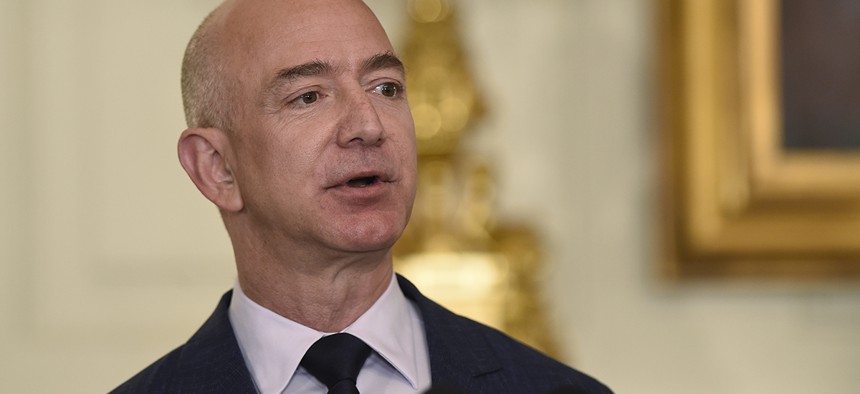Jeff Bezos Lays Out Amazon’s Three-Pronged Approach to AI

Jeff Bezos, the founder and CEO of Amazon.com Susan Walsh/AP
Amazonians and investors alike, rest assured: Jeff Bezos knows artificial intelligence is a big deal.
Amazonians and investors alike, rest assured: Jeff Bezos knows artificial intelligence is a big deal.
The Amazon CEO took a few paragraphs in his annual shareholder letter to explain how the company is using AI throughout its business, having recognized and embraced the “external trend.” The letter itself focuses on the idea Amazon is still in “Day 1,” still a startup well aware irrelevance and excruciating decline begins when you reach Day 2.
Bezos outlined three major categories that artificial intelligence falls into at the company: visible products and moonshots, core operations, and enterprise cloud.
“The outside world can push you into Day 2 if you won’t or can’t embrace powerful trends quickly. If you fight them, you’re probably fighting the future. Embrace them and you have a tailwind,” Bezos writes.
Products and Moonshots
This category is what Bezos calls a “practical application of machine learning,” consumer-facing products or services that wouldn’t be possible without AI. The Amazon Go grocery store fits in here, as well as Prime Air delivery drones and of course, the company’s virtual personal assistant, Alexa.
While Amazon Go and Prime Air delivery are still in extremely early stages, Alexa has become the virtual assistant du jour—this year, we think it won CES without even showing up. It’s easy to see Amazon as a leader here, as the Echo’s release practically invented the product category of voice-assistant speaker.
Beneath the Surface
Artificial intelligence isn’t all drones and virtual assistants—Bezos says a lot of the AI work within the company happens under the hood of its core business, e-commerce. The company uses artificial intelligence to predict product demand, power search rankings, create and recommend deals, detect fraud and translate the site into other languages.
“Though less visible, much of the impact of machine learning will be of this type—quietly but meaningfully improving core operations,” Bezos says.
This also fails to mention Amazon’s highly-automated warehouses, which use robots to accelerate processing and shipping time.
The cloud
This is typically where people’s eyes start to glaze over. It’s hard to overstate Amazon’s dominance in the sector, though: the company earns more than five times the revenue of its nearest competitor, Microsoft. Alongside S3 storage that supports much of the web (and cripples much of the web when it fails), Amazon offers easy tools for developers to integrate Amazon’s artificial intelligence algorithms into their own applications, as well as servers for AI companies to run their own algorithms.
The cloud is also a great marketing tool for providers like Amazon, because the work others are doing on the platform usually sounds very impressive, without the provider having to do much of the tinkering and design that makes the final product work. Bezos touts the company’s “pre-packaged” AI algorithms as helping predict disease and estimate crop yields for farmers, with “no machine-learning expertise required.”
Capping AI’s section of the letter, Bezos says:
“Watch this space. Much more to come.”





